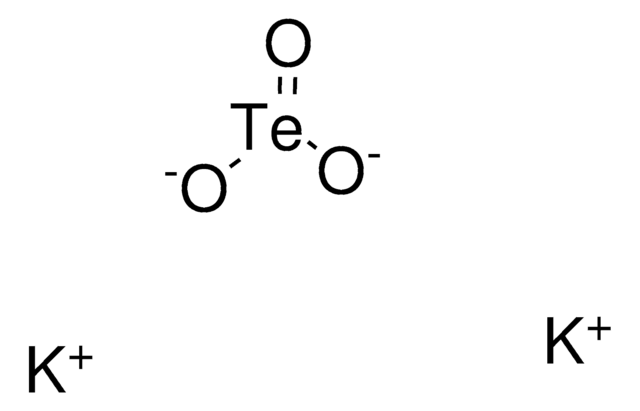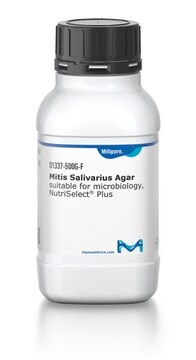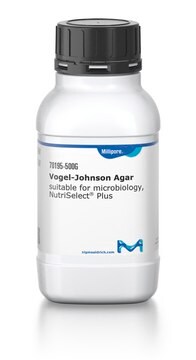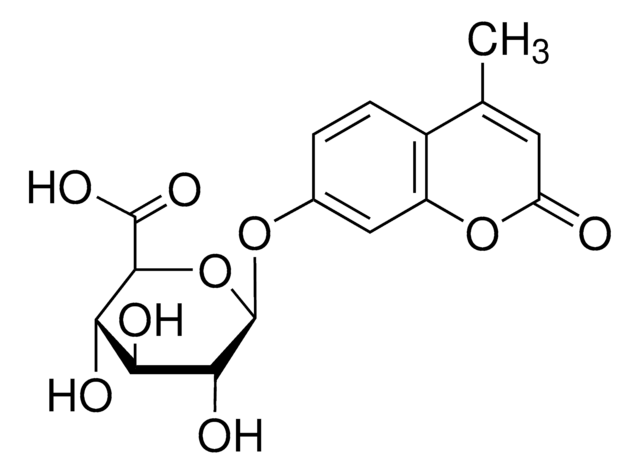17774
Potassium tellurite solution
1% in H2O, suitable for microbiology
About This Item
Produits recommandés
Agence
according to ISO 6888-1:2020
Niveau de qualité
Stérilité
sterile (Filtered and Aseptic Handled)
Forme
liquid
Durée de conservation
limited shelf life, expiry date on the label
Concentration
1% in H2O
Application(s)
environmental
food and beverages
microbiology
Température de stockage
2-8°C
Adéquation
Corynebacterium spp.
Staphylococcus spp.
Chaîne SMILES
[K+].[K+].[O-][Te]([O-])=O
InChI
1S/2K.H2O3Te/c;;1-4(2)3/h;;(H2,1,2,3)/q2*+1;/p-2
Clé InChI
BFPJYWDBBLZXOM-UHFFFAOYSA-L
Vous recherchez des produits similaires ? Visite Guide de comparaison des produits
Application
Autres remarques
Code de la classe de stockage
10 - Combustible liquids
Classe de danger pour l'eau (WGK)
WGK 2
Point d'éclair (°F)
Not applicable
Point d'éclair (°C)
Not applicable
Équipement de protection individuelle
Eyeshields, Faceshields, Gloves
Faites votre choix parmi les versions les plus récentes :
Déjà en possession de ce produit ?
Retrouvez la documentation relative aux produits que vous avez récemment achetés dans la Bibliothèque de documents.
Les clients ont également consulté
Articles
Chromogenic media enable the selective detection of S. aureus, which produce bluish-green colonies that are clearly differentiated from other species.
Notre équipe de scientifiques dispose d'une expérience dans tous les secteurs de la recherche, notamment en sciences de la vie, science des matériaux, synthèse chimique, chromatographie, analyse et dans de nombreux autres domaines..
Contacter notre Service technique











